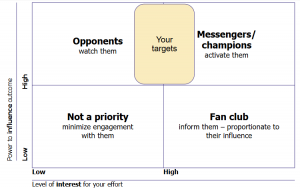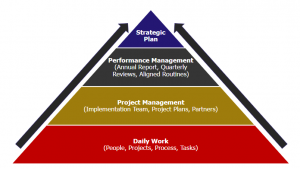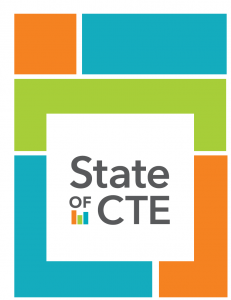 At the 2024 Fall Meeting in sunny Phoenix, AZ, Advance CTE unveiled the long-anticipated modernized National Career Clusters Framework® (the Framework), which provides structural alignment and a common language to bridge education and work, empowering each learner to explore, decide, and prepare for dynamic and evolving careers.
At the 2024 Fall Meeting in sunny Phoenix, AZ, Advance CTE unveiled the long-anticipated modernized National Career Clusters Framework® (the Framework), which provides structural alignment and a common language to bridge education and work, empowering each learner to explore, decide, and prepare for dynamic and evolving careers.
In anticipation of the multi-year implementation process for Career Technical Education (CTE) leaders and state teams, we invited Thomas DeWire, Founder and Principal Consultant of EdScale, LLC, to discuss change management and effective implementation. For over two decades, Thomas has worked with states, districts, schools, and education-focused organizations to get better results through a relentless focus on effective implementation.
Prioritize Your Goals
During the Managing Change plenary session, Thomas shared promising implementation practices from his book How to Implement (just about) Anything, which provides succinct steps for proactive planning and controlled execution. Beginning with his first lesson, Thomas advised participants to consider the scope of their implementation plans.
Thomas states, “I have experienced the dense state/district/school improvement plans. The kitchen sink approach to school improvement. That doesn’t work. Instead, what are a couple of things that are changing that we will implement systematically?”
Key considerations:
- Select three to seven priorities for implementation planning
- Avoid “fat plans” that tend to scope creep and dilute the focus or result in partially achieved goals
- Ground your priorities in reality
Build Strong Guiding Coalitions and Teams
Thomas emphasized the importance of making these prioritization decisions with their guiding coalition and implementation team—the team members and advocates who will move this work forward—in mind.
“The guiding coalition will advocate, support, guide, and give you valuable feedback…Then, you need an implementation team. Who are the people doing the work?” Thomas asks.
He provides a grid to gauge external partners’ ability to influence outcomes and identify who should be at the table for initial strategy planning through the execution (Figure 1).
Figure 1. Prioritize external partners by mapping their ability to influence outcomes and current interests
Start Early and Create Capacity
After establishing who the folks in the guiding coalition and implementation team are, Thomas advised to start routines early and create capacity to avoid building the plane while it’s flying. This looks like building feedback loops to drive improvement and proof points to highlight quick wins.
“We get feedback, correct it, and then celebrate! We spend more time on the things that are broken than the things that are working. If we flip that, we’d see outsized and incredible results.”
Stay Consistent and Plan for Solutions
Small and consistent victories compound over time. Thomas shared a model (Figure 2) of how teams can envision an aligned, coherent, lightweight, and effective implementation infrastructure to achieve project priorities.
Figure 2. Effective implementation infrastructure
With a now full toolkit to implement the Framework, Thomas cautioned us about obstacles our teams may encounter when putting plans in motion. These include complacency, weak leadership coalitions, insufficient communication, and failure to create short-term wins. However, incorporating the learnings from the session has equipped leaders to stay focused on prioritized goals, build strong guiding coalitions, create feedback loops for continuous improvement, and celebrate small victories to maintain momentum and drive successful implementation.
Thomas ends with the following:
“You’re the only people in your state who can create alignment and coherence around the Modernized Career Clusters. Creating a short-term lens and thinking about what might be possible builds momentum, bringing other people along with you. It’s not that we don’t know how; it’s not that we don’t have the talent to do it; it’s that it’s really hard to scale it… The goal, the challenge, is to actively facilitate change–to create clarity, alignment, and coherence to get better results for students.”
Advance CTE will continue to have opportunities for states to engage in Career Clusters Framework Adoption & Implementation. Our Resources webpage will continue to be updated with materials for implementation at state and local levels, crosswalks, and communication tools to help leaders at every level assess, adopt, and implement the Framework at their pace and capacity.
Please reach out through our Contact Us form or via email at [email protected]
 Marie Falcone, policy associate
Marie Falcone, policy associate







 Kate Kreamer, Executive Director
Kate Kreamer, Executive Director  The importance of comprehensive student career preparation for life’s modern challenges is increasingly apparent in the evolving landscape of education and workforce development. Family and Consumer Sciences (FCS) is a pivotal solution, bridging career preparation and employability skills for holistic student readiness across various career facets.
The importance of comprehensive student career preparation for life’s modern challenges is increasingly apparent in the evolving landscape of education and workforce development. Family and Consumer Sciences (FCS) is a pivotal solution, bridging career preparation and employability skills for holistic student readiness across various career facets. States make significant contributions to CTE programs through non-categorical, line item appropriations. Programmatic funding is distributed through periodic, legislatively established authorizations that are contingent on the availability of funds. States often place conditions on how money should be spent or used to promote state priorities. Additionally, a programmatic line item appropriation can be a recurring or a one-time investment. This blog highlights appropriations in industry-recognized credentials, Career Technical Student Organizations (CTSOs), career advisement, and educator preparation for fiscal year (FY) 2022. You can read more about categorical funding in the first blog in this series,
States make significant contributions to CTE programs through non-categorical, line item appropriations. Programmatic funding is distributed through periodic, legislatively established authorizations that are contingent on the availability of funds. States often place conditions on how money should be spent or used to promote state priorities. Additionally, a programmatic line item appropriation can be a recurring or a one-time investment. This blog highlights appropriations in industry-recognized credentials, Career Technical Student Organizations (CTSOs), career advisement, and educator preparation for fiscal year (FY) 2022. You can read more about categorical funding in the first blog in this series,  Additional Resources
Additional Resources




 One recent dissertation,
One recent dissertation, 

